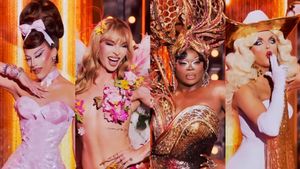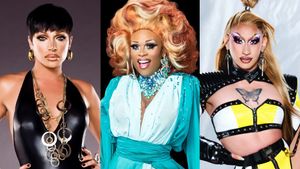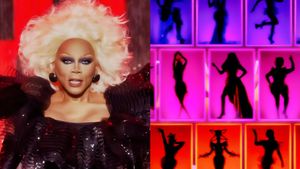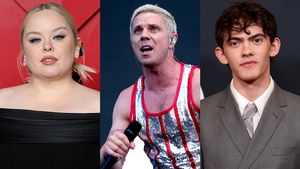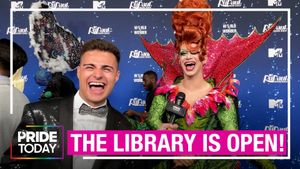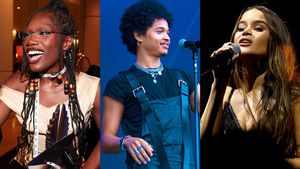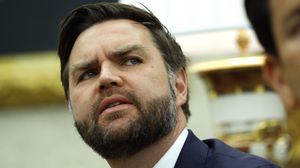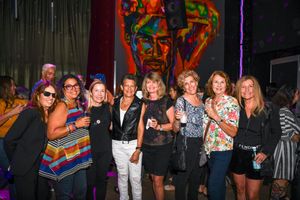All Rights reserved
By continuing to use our site, you agree to our Private Policy and Terms of Use.
When my friend Josh asked me to join him at the 1998 Gay Games in Amsterdam, my American heart skipped a Eurobeat. Of course I wanted to be there to support him in his quest for a gold medal in cycling. But more than that, I wanted to come along for the Pride festivals. Turned off by the crass commercialization of American celebrations and turned on by most things European, I was itching to experience Pride in Europe. With Amsterdam's famous Canal Parade scheduled during the Games and something called EuroPride happening just a week earlier in Stockholm, I was about to dive headlong into what would become my obsession with European gaystravangazas.
Our adventure began in the Swedish capital, where the 18-hour-a-day Nordic summer sun was shining brightly on EuroPride, the annual event that rotates throughout the continent's gay meccas. This was Stockholm's debut as the host city, and its gay populace had devoted itself to presenting an ambitious monthlong agenda. Thousands of people -- gay, straight, hipsters, nerds, musclemen, lesbian moms, locals and visitors (both European and international) alike -- descended on the designated Pride Park to watch performances, trade political ideas, and just mingle with one another. The energy was electric and unifying, so much so that somehow here in this alien land of seemingly 10-foot Scandic giants I felt more connected to my gay brothers and sisters than I ever had in the U.S.
Mind you, the Stockholm homos also know how to put on a party. On the eve of the parade, Josh and I joined a couple thousand of Scandinavia's finest at an official EuroPride bash in a massive warehouse in Sodermalm. At midnight a dark, goth-tinged fashion show commenced with ominous artiness, and the crowd watched in silent deference. Then, very suddenly, the room exploded with glee as the emcee introduced the next performer, and the audience only gushed more excitedly as an aging disco diva appeared onstage, belting a song that was clearly some Euro equivalent to "I Will Survive" (I'd later learn it was Britain's Tina Charles and her 1976 disco hit "I Love to Love"). The whole scene was incredibly surreal. A few minutes later I met Kalle, who'd just arrived from Helsinki on his 30th birthday and who would become my boyfriend for the next few years: a Finn and an American, whose first words to each other, " Hej, hur ar det? " ("Hi, how are you?") were in Swedish, brought together by EuroPride.
Following a Pride act like that wasn't going to be easy, but the following week Amsterdam gave it its best shot. With the Gay Games in full swing, the Dutch capital was packed to the gills with 250,000 gay people from around the world. On the Saturday afternoon of Pride weekend, they mingled with what seemed like the entire city as throngs lined the banks for the Canal Parade, a vibrant water pageant where the floats actually float.
A few years later I scurried back to Europe for another multiple shot of continental pride. This time my friend Patrick and I began in Berlin on the weekend of its CSD (Christopher Street Day) Parade, which draws a half-million viewers and ends at the Siegessaule, an important symbol for the city's gay community, not least because it's at the center of the Tiergarten, a traditional cruising spot. Later on, Patrick's Austrian drag queen friend Dame Galaxis took us to the raw p "Alternative CSD" in the no-nonsense Kreuzberg area. This much smaller but raucous and demimilitant Pride forbids commercialism of any kind, harkening back to our pre-sponsored liberation roots. Next we darted down to Vienna for EuroPride 2001, where the after-parade main stage was on the magnificent Heldenplatz, and the tres chic baroque closing party was set in the city's newly reopened Kunsthalle, formerly the Hapsburg imperial stables.
Last year, on the 10th anniversary of its first go-round, Stockholm hosted EuroPride for the second time. Since Kalle and I are still great friends, and since it also marked exactly a decade since we'd met (not to mention his 40th birthday), it was a milestone we couldn't pass up. We arrived to find the event again taking the entire city by storm. The dizzying roster of activities, from sober panel discussions on the plight of Eastern European gays to a riotously fun thousands-strong evening of outdoor schlager music, had grown so varied and popular that the Pride Park needed a second venue, the city's Kulturhuset, to take up the slack with a Pride House. Never had I seen so many diverse types of queer people -- plus their children, parents, and other loved ones -- merging so magically (even in my now many years of Euro priding). Sure, maybe it'd all gotten a bit more commercial than the '98 version, but the organizers had found sublimely tasteful ways to do so. Posh city center department store NK dedicated its streetfront windows to fabulous gay-themed displays by some of Sweden's best-known queer artists and designers. ("It's like gay Christmas!" we overheard one giddy Brit gush.) Both the EuroPride parade and its audience had also swelled dramatically. Some 50,000 marched while some 450,000 watched -- on a rainy Saturday, no less. No small feat for a city whose entire population stands at around 810,000.
As Kalle and I wandered along Stockholm's gorgeous waterfront the next day, we bumped into Martha Wash, who'd performed to a tightly packed and delighted EuroPride closing party crowd the night before. At the time I didn't even get the full flukiness of our impromptu meeting, that the only times I'd seen her before were as part of the Weather Girls at the 1998 Gay Games in Amsterdam and again at EuroPride Vienna in 2001. I cooed about how fab her Stockholm show had been and asked her if she was having fun in Europe. "Oh, absolutely," she said. "I just love it over here." Me too, Martha. Me too.































